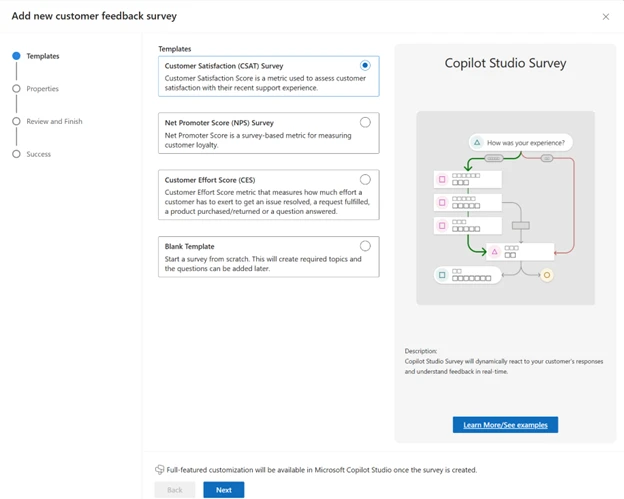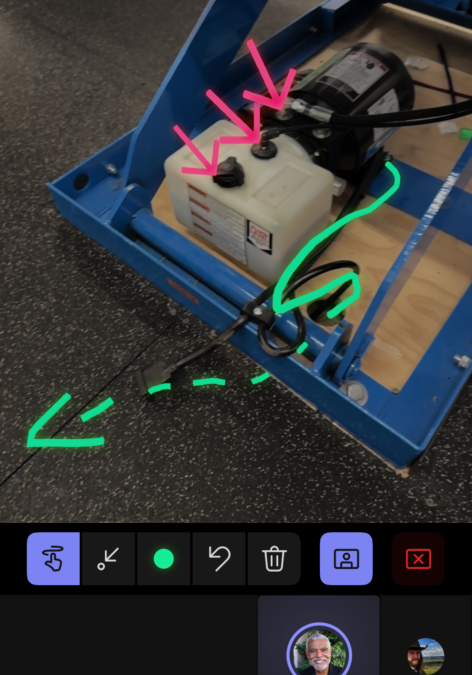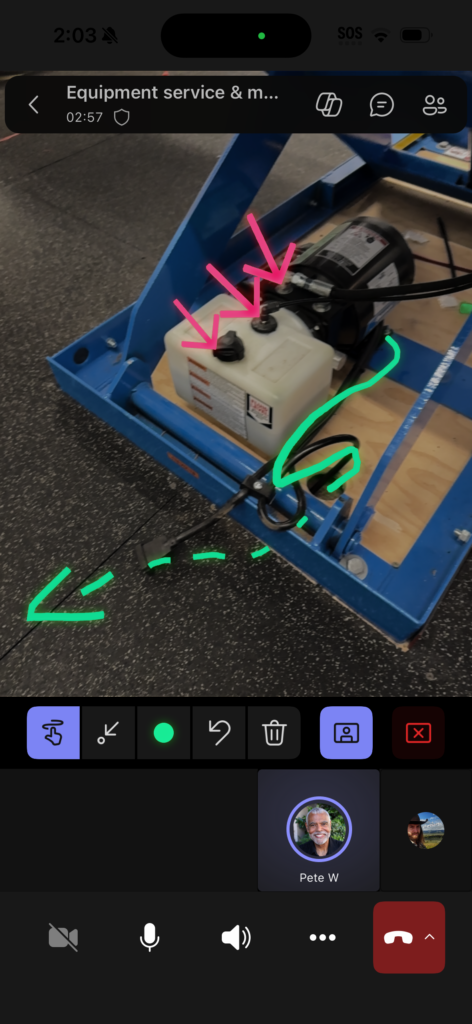
Unlock the Microsoft Copilot Studio-powered customer survey
This article is contributed. See the original author and article here.
We are excited to announce the Copilot Studio-powered customer feedback survey in Dynamics 365 Contact Center, now in preview. Now, contact center managers can use Copilot Studio Survey in the Contact Center admin center to dynamically respond to customer feedback.
Traditionally, management can take a long time to act on the feedback that customers provide. Additionally, managers may have to use various tools to capture customer feedback across different channels. In the era of AI, we can reimagine customer feedback management in Dynamics to enable real-time, automated, and personalized feedback loops, helping our customers unlock immense business value.
With this feature, contact center managers can use the generative AI capabilities of Copilot Studio bots to streamline the survey configuration process across channels. Supervisors get a holistic view of the feedback, all while maintaining flexibility and customization.
Choose your customer feedback survey
Starting in Dynamics, you can quickly author survey bots using either a blank template or one of three standard survey metrics:
- Customer Satisfaction Score
- Net Promoter Score
- Customer Effort Score.
After creating the survey bot, you can open it in Copilot Studio for bot authoring and customization. Add additional questions, use Power Automate to trigger workflows based on customer responses, and design your bot to meet your business needs. Best of all, once your bot is published, you can use it across voice, live chat, and social channels. The result is a unified, centralized survey configuration process.

Copilot-powered customer feedback in action
For a real-world example, let’s use Contoso Bank, which places a high value on customer feedback. The Net Promoter Score (NPS) metric is of particular interest, as it helps them measure customer loyalty. To leverage this, they use the new Copilot-powered customer feedback survey feature to quickly create an NPS survey bot from the Dynamics 365 Contact Center admin center and deploy it across all their channels. In Copilot Studio, they customize the bot to trigger a Power Automate flow to create a follow-up case if the score is less than 5. This bot engages with customers at the end of the call or conversation and gathers their feedback. If the NPS score is less than 5, it triggers Power Automate to create a follow-up case. This ensures they promptly attend to any unhappy customers, thereby quickly improving overall customer satisfaction and loyalty for Contoso Bank.
In today’s world, where customer feedback is crucial, this feature is a game-changer. Businesses can quickly gather and act on feedback, ensuring they stay responsive and attuned to customer needs. The result is customer satisfaction and loyalty.
Learn more
To learn more about enabling and using the Copilot-powered survey, read the documentation.
The post Unlock the Microsoft Copilot Studio-powered customer survey appeared first on Microsoft Dynamics 365 Blog.
Brought to you by Dr. Ware, Microsoft Office 365 Silver Partner, Charleston SC.







Recent Comments